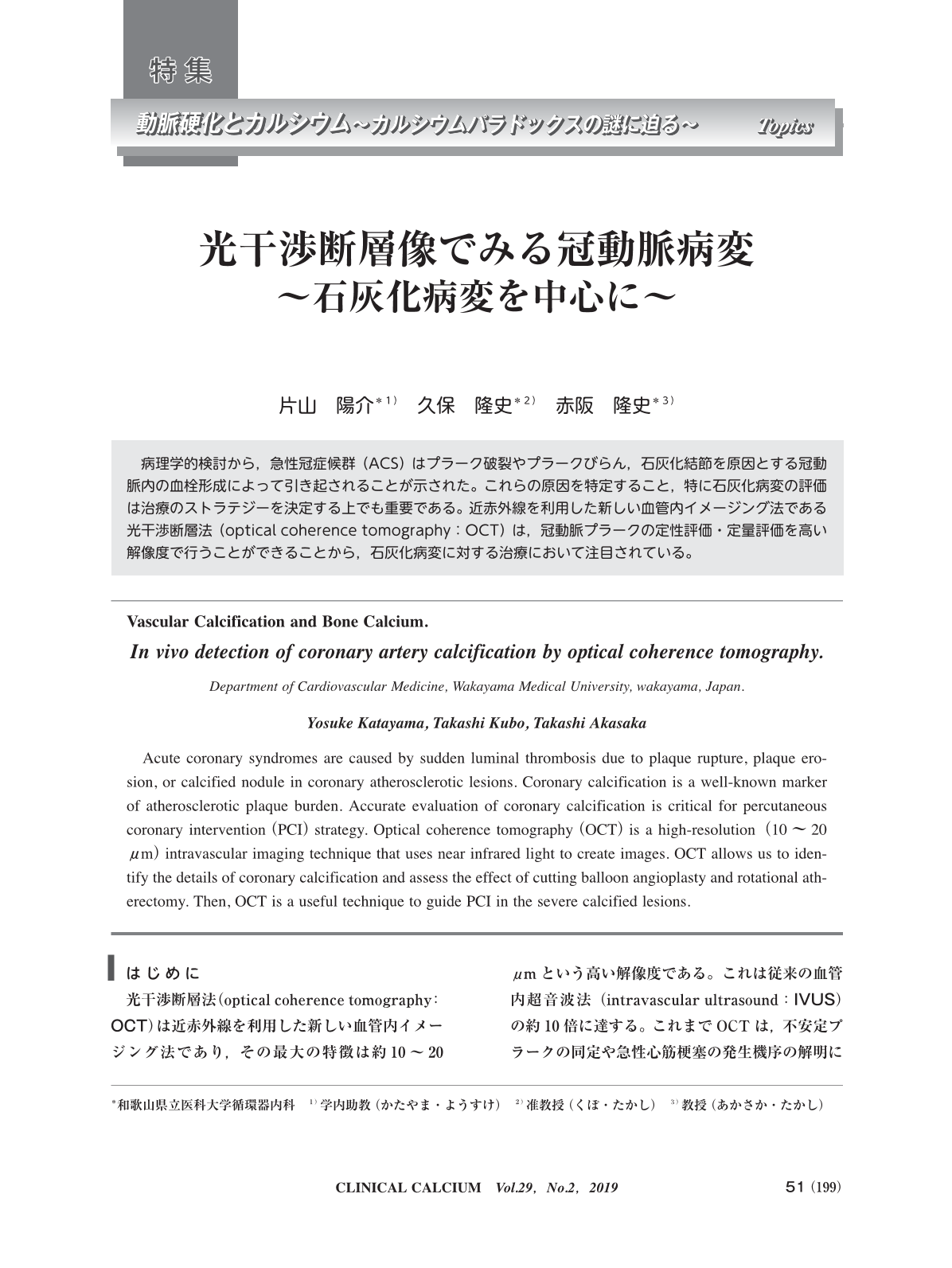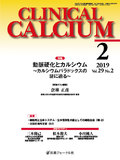Japanese
English
- 有料閲覧
- Abstract 文献概要
- 1ページ目 Look Inside
- 参考文献 Reference
病理学的検討から,急性冠症候群(ACS)はプラーク破裂やプラークびらん,石灰化結節を原因とする冠動脈内の血栓形成によって引き起されることが示された。これらの原因を特定すること,特に石灰化病変の評価は治療のストラテジーを決定する上でも重要である。近赤外線を利用した新しい血管内イメージング法である光干渉断層法(optical coherence tomography:OCT)は,冠動脈プラークの定性評価・定量評価を高い解像度で行うことができることから,石灰化病変に対する治療において注目されている。
Acute coronary syndromes are caused by sudden luminal thrombosis due to plaque rupture, plaque erosion, or calcified nodule in coronary atherosclerotic lesions. Coronary calcification is a well-known marker of atherosclerotic plaque burden. Accurate evaluation of coronary calcification is critical for percutaneous coronary intervention(PCI)strategy. Optical coherence tomography(OCT)is a high-resolution(10~20 μm)intravascular imaging technique that uses near infrared light to create images. OCT allows us to identify the details of coronary calcification and assess the effect of cutting balloon angioplasty and rotational atherectomy. Then, OCT is a useful technique to guide PCI in the severe calcified lesions.



